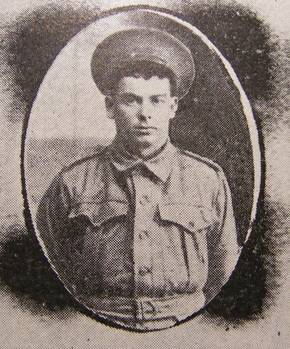
185858
HENDERSON, Charles
| Service Number: | 8386 |
|---|---|
| Enlisted: | 6 July 1915, at Keswick |
| Last Rank: | Gunner |
| Last Unit: | 2nd Divisional Ammunition Column |
| Born: | Unley, South Australia, Australia, August 1896 |
| Home Town: | Torrensville, South Australia |
| Schooling: | Not yet discovered |
| Occupation: | Labourer |
| Died: | Natural causes, 12 June 1976, place of death not yet discovered |
| Cemetery: |
Centennial Park Cemetery, South Australia |
| Memorials: |
World War 1 Service
| 6 Jul 1915: | Enlisted AIF WW1, Driver, 8386, 6th Field Artillery Brigade , at Keswick | |
|---|---|---|
| 22 Nov 1915: | Involvement Driver, 8386, 6th Field Artillery Brigade , --- :embarkation_roll: roll_number: '4' embarkation_place: Melbourne embarkation_ship: HMAT Persic embarkation_ship_number: A34 public_note: '' | |
| 22 Nov 1915: | Embarked Driver, 8386, 6th Field Artillery Brigade , HMAT Persic, Melbourne | |
| 11 Nov 1918: | Involvement AIF WW1, Gunner, 8386, 2nd Divisional Ammunition Column |
Help us honour Charles Henderson's service by contributing information, stories, and images so that they can be preserved for future generations.
Add my storyBiography contributed by Adelaide High School
Charles Henderson was born in August of 1896 in Unley, South Australia. Charles grew up on Clifford Street, Torrensville, South Australia and his parents’ names were Priscila and Thomas Henderson. Charles Henderson had blue eyes, dark hair, weighed around 130 pounds and was 5 feet and 2 inches in height.
On the 6th of July 1915 only at the age of 18- and 11-months Charles Henderson enlisted himself in the army in Keswick Barracks, South Australia. On the 22nd of November 1915 Charles Henderson embarked from Melbourne, Victoria on board the HMAT A34 Persic. Charles' unit in the war was 6 FAB (field artillery brigade), although he was later transferred to other units including the 5th Field Artillery Brigade and the 2nd Division Ammunition Column. Charles was taken to the hospital on the battle field on the 6/5/1918 after developing myalgia in his lower back and knee. Myalgia is also known as muscle pain or muscle ache and is most commonly caused by the over use of a muscle or group of muscles. It also can be caused by a variety of diseases.
Charles Henderson was a part of the army for a total of 3 years and 279 days and was fighting in the war for a total of 3 years and 95 days. He received a British War Medal and the Victory Medal for his service in the war. He was disembarked on the 24th of February 1919 before being discharged on the 10th of march 1919. On the ship back to Adelaide Charles was admitted to the ship’s hospital on the 2/2/1919 due to a septic neck.
He got married in England whilst he was a part of the R.B.A.A (Reserve Brigade Australian Artillery). Charles got married on the 6th of August 1918 to Sarah Elisabeth Davis who worked as a press worker. He moved to England after the war and lived at 37 Victor Road, Windsor Green, Birmingham, England before then moving back to Adelaide.
Charles Henderson disappeared for several months whilst he moved back to Adelaide and had issues with his wife’s papers allowing her to enter Adelaide. He wanted an address so he could send money to his wife and requested that his wife would be immediately transferred to Adelaide. Eventually his wife and himself were reunited in Adelaide.
Charles Henderson passed away at the age of 80 on the 12th of June 1976 due to natural causes. He was buried in Centennial Park Cemetery, Pasadena, South Australia, Australia
Bibliography
- Charles HENDERSON n.d., UNSA Australia, viewed 2 June 2020, <https://www.aif.adfa.edu.au/showPerson?pid=134075>.
- HENDERSON Charles n.d., National Archives of Australia, viewed 2 June 2020, <https://recordsearch.naa.gov.au/SearchNRetrieve/Interface/DetailsReports/ItemDetail.aspx?Barcode=5314853&isAv=N>.










